Springs are an extremely important and common component in mechanical parts, excelling in enabling motion, shock absorption, providing controllable pushing force, pulling force, and flexible clearance capabilities. Simply put, we can find and use spring applications in every aspect of our lives. For example: shock absorption in automobiles and trains, various control valves, door locks, mechanical watches, clocks, etc.
Although springs are widely used and applied extensively in many mechanical structures, their importance is often overlooked in our daily selection, design, manufacturing, and assembly. This article will introduce the principles and calculation formulas of springs, as well as the advantages and disadvantages of different classifications and materials. Let our expertise empower your work. Richconn has professional equipment and experienced engineers that can provide spring production services beyond CNC Machining, Mold Manufacturing, Sheet Metal Processing, and 3D Printing.
Torsion Spring |
Helical Compression Spring |
Helical Extension Spring |
Disc or Belleville Spring |
Laminated or Leaf Spring |
Conical Spring |
Die spring |
Wave Spring |
Clockwork Spring |
Common Spring Summary Table
Spring Type | Characteristics | Advantages | Disadvantages | Applicable Occasions |
Coil Spring | Made of wire coiled into a spiral shape | Simple structure, easy to manufacture, low cost | Prone to permanent deformation and fatigue | Cars, machinery, instruments, toys |
Leaf Spring | Made of stacked metal plates | Simple structure, high load capacity | Large size, not suitable for limited space | Vehicles, railways, heavy machinery |
Torsion Spring | Spring body twisted around the axis when loaded | Compact size, precise torque | Complex manufacturing, low load capacity | Doors, lids, clamps, valves |
Gas Spring | Compressed gas provides opposing force | Adjustable force, smooth damping | Susceptible to leakage, temperature | Office furniture, tailgates |
Rubber Spring | Made of elastic rubber materials | High vibration damping, noise reduction | Poor fatigue resistance, aging | Vibration damping pads |
Disc Spring | Stacked coned disc washers | Compact, constant spring rate | Limited space, complex assembly | Precise spring force applications |
Let's start with some fundamentals about springs. A spring is a structure that stores energy when an external force (from a load) is applied and releases energy when the external force is removed. Under normal conditions, regardless of what type of spring is used in a product, the spring will return to its original shape after the load is removed. If it cannot return to its original state, it proves that this spring has failed and needs to be replaced with a new device.
Hooke's law is the fundamental law governing the design, manufacture, and use of springs. It applies in any environment where springs are used. Below we will briefly introduce the relevant design and manufacturing principles, application environments, etc.
Before we discuss the various types of springs, let's briefly describe some common design calculation formulas for springs to allow our design engineers to quickly grasp the relevant knowledge. This will also make it convenient for relevant personnel to check and verify fundamentals about springs. Below are the calculation formulas derived from Hooke's law:
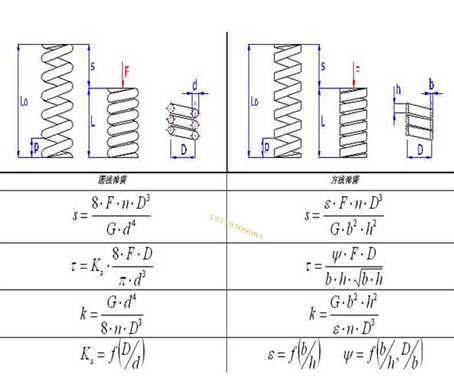
K = (G * d^4) / (8 * N * D^3)
Where:
G is the shear modulus of the spring material
d is the wire diameter of the spring
n is the effective number of coils in the spring
D is the mean diameter of the spring

K = F/δ
Where:
K = Spring rate (N/m)
F = Force applied (N)
δ = Deflection or extension of spring (m)
K = (G * d^4) / (8 * N * D^3)
Where:
G is the shear modulus of the spring material
d is the wire diameter of the spring
N is the number of active coils in the spring
D is the mean diameter of the spring
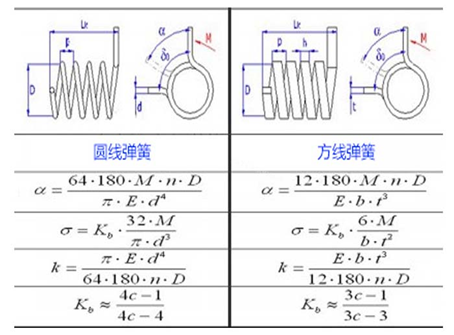
K = T/θ
Where:
K = Spring rate (N*m/rad)
T = Torque applied (N*m)
θ = Angle of twist (radians)
K = G * d^4 / (8 * N * D^3)
Where:
G is the shear modulus of the spring material
d is the wire diameter of the spring
N is the number of active coils in the spring
D is the mean diameter of the spring
Potential energy (U) = (F^2 * l) / (2 * K)
Where F is the applied force, l is the deflection distance, and K is the spring rate.
Natural frequency (f) = (1 / 2π) * √(K / m)
Where K is the spring rate and m is the mass of the spring.
Maximum stress (σ) = (8 * F * r) / (π * d^3)
Where F is the applied force, r is the mean radius of the spring, and d is the wire diameter.
Natural length (L0) = Number of active coils (n) * Wire diameter (d)
Solid height (H) = Initial length (L0) - Compressed or extended distance
These calculation formulas can help engineers perform basic calculations and estimates when designing springs. In actual applications, other factors also need to be comprehensively considered to ensure the designed spring meets requirements.
The material, shape, function, etc. of springs are determined according to different application environments, with a very wide range of applications. In general, there are four major categories of springs, each with different sub-categories. Let's introduce them one by one.
Coil springs are the most common type of spring used in product manufacturing. They can be formed into a spiral shape with wire of different cross-sectional shapes (hence the name). Below are the types of springs in the first category.
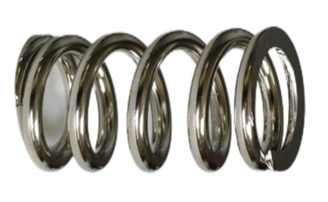
Coil compression springs: The most common spring form, coil shaped.
Conical springs: The spring wire is arranged in a conical shape.
Nested coil springs: Multiple coiled springs stacked together.
Disc springs: Multiple disc washers stacked together.
Compression springs are open-coiled helical springs with constant coil diameter and variable pitch. They resist axial compression.
The simplest example of their application is in ballpoint pens where they generate the "pop-out" effect. They are also used in valves, suspensions, etc.
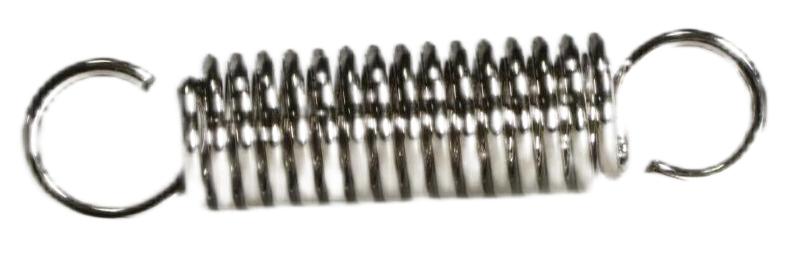
Coil extension springs: A coil spring stretched by forces at both ends.
Leaf springs: Metal leaf flexed by tensile forces.
Nested coil extension springs: Multiple nested coil springs under tension.
Unlike compression springs, extension springs are closed-coil helical springs. They are used for producing tension, storing energy, and releasing energy to restore the spring to its original shape.
A simple example of their application is in garage doors. Other applications include pull rods, clamps, and weighing machines.
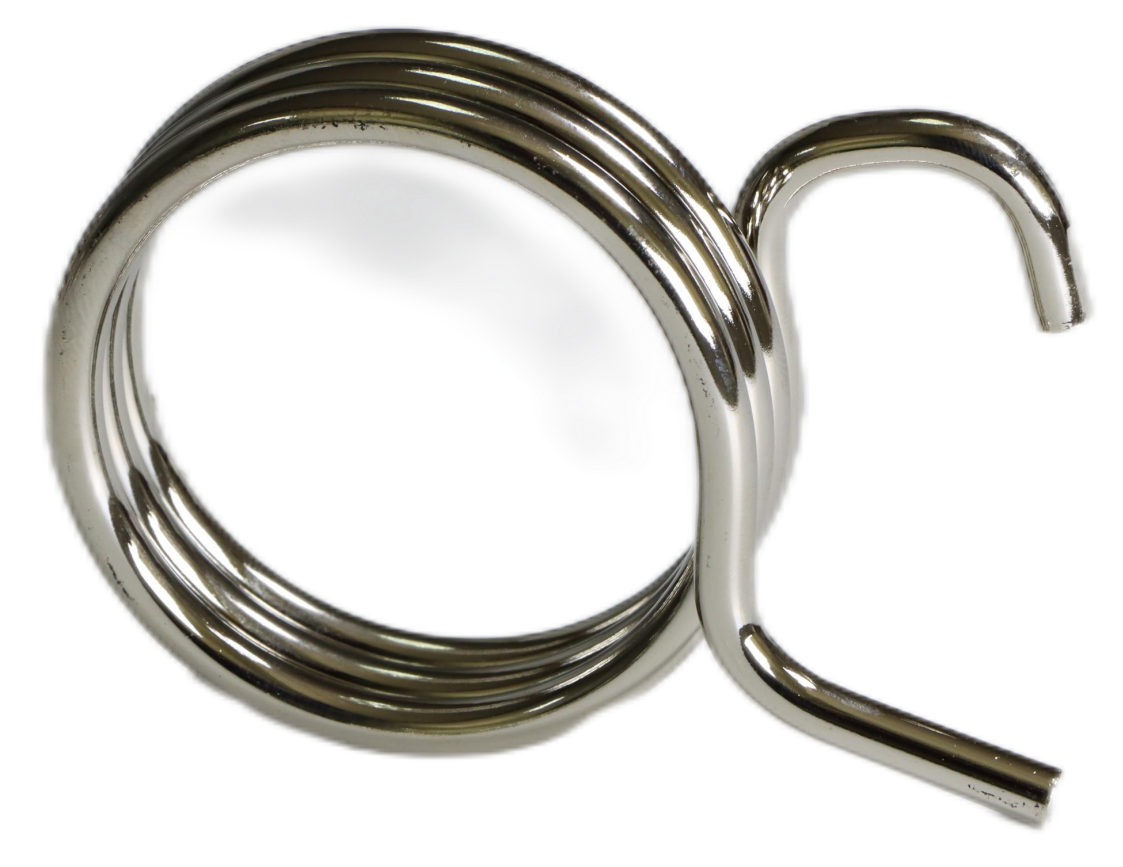
Coil torsion springs: Twisted coil springs.
Torsion bars: Bars twisted to deform.
Torque tubes: Tube deformed by twisting.
Torsion springs connect two parts at their ends. This keeps the two parts separated at a fixed angle. These springs are used where force acts radially due to rotation producing radially directed motion. Also, CNC machining capabilities can produce high volume customized double helix torsion springs.
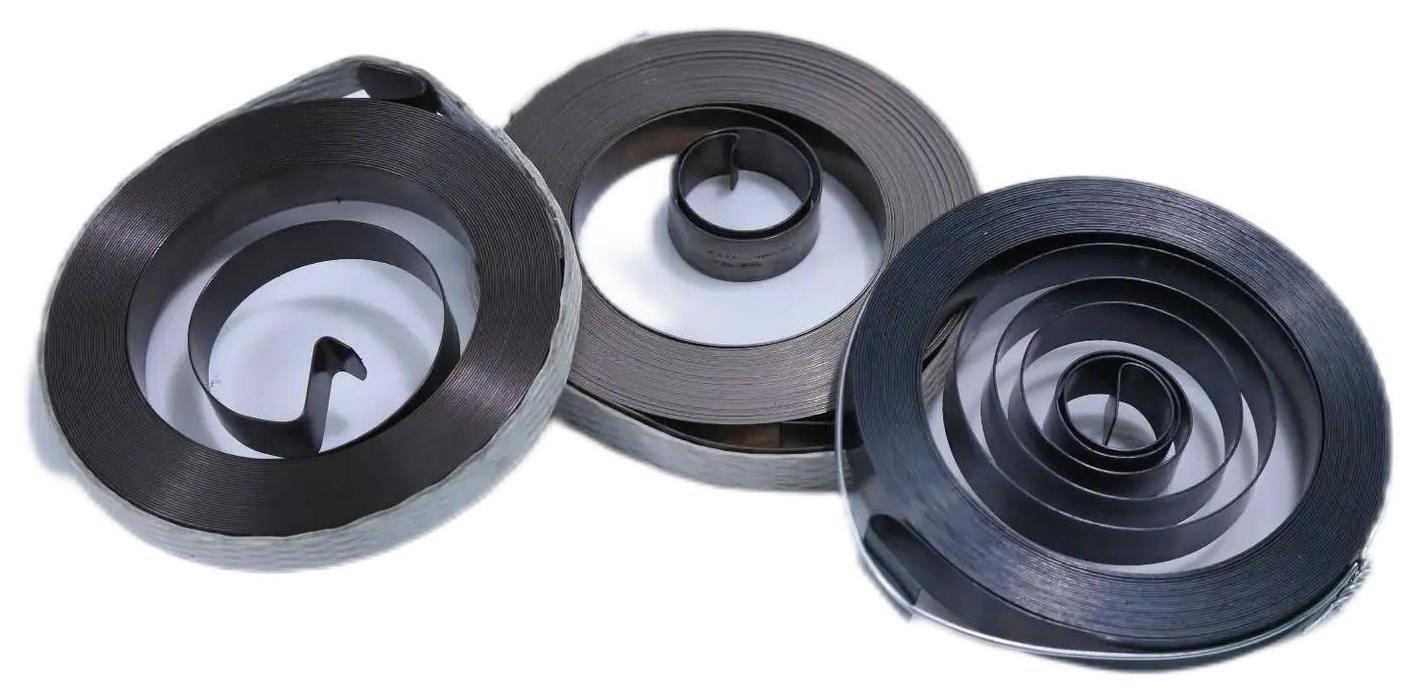
Leaf springs: Metal leaf flexed by bending forces.
Coil springs: Metal wire coiled into a spiral, flexed by bending forces.
Spiral springs are made by rolling a rectangular metal strip into a flat spiral shape. When activated, it stores a reasonable amount of energy and can release energy at a constant rate. The constant release makes them suitable for mechanical watches, toys, seat back adjusters, etc.
Steel wire springs, titanium alloy springs, copper alloy springs, molybdenum and tungsten springs, etc.
Plastic springs, rubber springs, fiberglass springs, etc.
Steel wire springs, titanium alloy springs, copper alloy springs, molybdenum and tungsten springs, etc.
(2) Non-metal springs
Plastic springs, rubber springs, fiberglass springs, etc.
Automotive springs, door lock springs, watch springs, instrument springs, etc.
In summary, springs can be categorized by their mode of action, material, shape, and application. The wide range of spring types allows designers to select the optimal spring to suit the specific requirements of each application.
1. Straight leaf springs
The simplest form of a leaf spring, made of a flat metal strip. Can be circular, rectangular, polygonal, etc.
2. Curved leaf springs
A straight leaf spring with an initial curve to induce pre-stress. Common examples are coil leaf springs.
3. Corrugated leaf springs
The leaf is pressed/stamped into a corrugated shape to increase stiffness.
4. Hooked leaf springs
The leaf is bent into a hook shape and stacked for cushioning and positioning.
5. Honeycomb leaf springs
The leaf has a honeycomb pattern providing radial and axial stiffness for 3D positioning.
6. Disc leaf springs
The leaf is a circular disc, using disc flex to absorb impacts.
7. Composite leaf springs
Two or more leaf springs stacked to increase stiffness, widely used in automobiles.
In summary, various structural leaf spring forms can be designed and manufactured based on requirements, to serve different functions.
1. Single disc spring
The simplest form with one disc utilizing disc flex.
2. Double disc spring
Two parallel discs flexing relative to each other for greater stiffness.
3. Multi-Disc spring
Multiple discs in sequence to form different stiffness.
4. Conical disc spring
Tapered discs to provide progressive force axially.
5. Barrel disc spring
Barrel-shaped discs for increased flexural stiffness.
6. Spherical disc spring
Flattened discs formed into a spherical shape to increase working area.
7. Corrugated disc spring
Corrugations or protrusions on the disc to increase overall stiffness.
8. Titanium disc spring
Made of titanium alloy for high strength and low density.
9. Fiberglass disc spring
Composite fiberglass material for improved fatigue strength.
10. Steel wire disc spring
Steel wire coiled around the disc edge to increase load capacity.
In summary, there are many types of disc springs that can be selected based on actual requirements and suitable disc spring design.
If you want to use springs to manufacture products on demand? Richconn provides a one-stop solution, from purchasing the required springs, manufacturing parts, to assembling products, and shipping them to you within 3 days at the earliest.
All information and uploads are secure and confidential.
Unlike conventional assumptions, springs are not necessarily made of iron. Importantly, springs can be made from different materials. Therefore, the material type determines the properties, types and applications of springs. Below are common materials:
Steel: Most common material for coil springs, leaf springs using steel wire or strips. Carbon steel, stainless steel, steel alloys.
Titanium Alloys: Features high strength and low density. Used in high-end fields.
Copper Alloys: Good electrical and corrosion resistance. Used for conductive springs.
Other Alloys: Such as molybdenum steel, tungsten steel and other special alloys.
Engineering Plastics: Such as nylon, POM etc, can manufacture various non-metallic springs.
Special Plastics: Such as PEEK high temp plastic for manufacturing high temp springs.
Natural Rubber: For manufacturing rubber springs.
Silicone Rubber: Heat resistance for high temp environments.
Fiberglass: High strength composite material.
Other Composites: Such as carbon fiber reinforced plastics.
Ceramics have high hardness, elastic modulus, and good corrosion resistance, which can manufacture springs with excellent performance.
Common ceramic spring materials include:
Silicon Nitride Ceramics: Extremely high elastic modulus, the preferred material for ceramic springs.
Zirconia Ceramics: Corrosion and oxidation resistance, can work in high temp environments.
Aluminum Nitride Ceramics: Low density and high hardness, can design lightweight ceramic springs.
Composite Ceramics: Made from multiple ceramics, combining various advantages.
Compared to metal springs, ceramic springs have higher elastic modulus and can provide greater energy storage density. Ceramic springs demonstrate excellent stability in high temp and corrosive environments. However, they are more difficult to manufacture and not yet widely applied. In the future, with manufacturing process improvements, ceramic springs will play a greater role in special environments.
6.1 Compression Springs
(1) Automotive suspension
Coil compression springs provide shock absorption and ride smoothness
(2) Door locks
Conical springs provide restoring force for lock latch resetting
(3) Watch mainsprings : Coil compression springs provide power for watch movement
(4) Measuring instruments :
Coil springs used as pointer return springs in gauges
(5) Electrical switches :
Leaf springs provide contact pressure in switches
6.2 Extension Springs
(1) Automotive hoods :
Hood gas springs provide assist force for lifting hood
(2) Furniture drawers :
Coil extension springs control opening and closing speed of drawers
(3) Doors and windows :Corrugated leaf springs provide smooth operation for car door windows
6.3 Torsion Springs
(1) Engine cams :
Torsion springs provide return torque for engine camshafts
(2) Instrument pointers :
Torsion springs provide return torque for pointer resetting
(3) Door lock latches:
Torsion bars provide self-resetting torque after lock rotation
6.4 Bending Springs
(1) Watch mainsprings - Metal strip mainsprings provide power for watch movement
(2) Switches - Leaf springs flex on press for circuit switching
(3) Gauges - Bending leaf springs used as sensing elements inside instruments
Springs are a basic component in many widely used products. As such, they have some nice advantages but also some drawbacks. Let's look at the pros and cons of springs in turn.
Good elasticity: Springs have good elastic deformation ability. They can undergo large deflection during loading and unloading and recover their original shapes afterwards. This elasticity enables them to play the roles of cushioning, energy storage, force exertion, etc.
High load capacity: Under relatively small volume and mass conditions, springs can withstand and store high loads and energy, thanks to the high strength of the materials.
Good damping properties: Internal friction of spring materials consumes some vibration energy, giving springs good damping characteristics for vibration reduction.
Quick response: The response and recovery of springs to loads are fast, allowing them to be used to quickly and precisely control motion.
Long service life: Choosing suitable materials for springs and controlling strain, they can withstand millions of cycles of loads and agility, giving them a long service life.
Small size: For a given load, the volume and mass of a spring are very small, which is a big advantage for many applications.
Low cost: Most springs are inexpensive to manufacture and their raw materials are not expensive either, making them a high cost-performance basic component.
Energy loss during use: Frictional losses inside spring materials during compression and recovery dissipate some energy.
Delayed recovery: It takes some time for springs to recover their original shapes after unloading, instead of instantaneous recovery, causing a delay effect.
Fatigue issues: Long-term repeated loading and elastic deformation can cause fatigue and slack in springs, affecting service life.
High temperature sensitivity: The elastic modulus of springs is quite sensitive to temperature changes, which affects their elastic performance.
Precise control required for manufacturing: High-precision springs require strict control of manufacturing techniques and parameters, increasing production costs.
Take up space: For some applications, the volume of springs is still relatively large, taking up considerable space.
Resonance issues: Under certain frequency loading conditions, resonance can occur, generating large vibrations and noise.
Vulnerable to torsion: Springs do not resist torsional loads very well, and torsion can damage their structures.
In summary, properly choosing spring types and controlling usage conditions can maximize the advantages of springs and avoid their disadvantages.
Springs are an important component of any motion products. When compressed and expanded, they can store and release energy. Choosing the right spring requires understanding the types of springs in use today. Each spring has its own characteristics and properties, depending on the type of material used, design and manufacturing process. Therefore, when selecting springs for your product, it's best to consider the above factors.
Richconn Custom Prototyping Services
Do you have a product and worry about making it fully functional? Why not contact Richconn today. Richconn offers custom online prototyping services at competitive prices. Our team has extensive knowledge of rapid prototyping types. Get instant quotes by uploading files.
A: The main types of springs are coil springs, disc springs, and leaf springs. Each main type has different sub-types of springs. For example, coil springs consist of torsion springs, extension springs, helical springs, and compression springs.
A: Coil springs consist of 4 different types of springs, each with their applications. The four are torsion springs, extension springs, helical springs, and compression springs.
A: The most common type of spring is the torsion spring. They have two ends connected to two different components to make them apart at an angle. One example application is door hinges. Here, when you open the door, the spring stores its rotational energy. When you let go of the door, the spring utilizes the stored energy to bring the door back to its original position.
A: Springs store and release energy through elastic deformation, and this ability makes them play important roles in various applications.
A: No, springs also have widespread uses in daily life such as household products, toys, etc.
A: When selecting a spring, factors like load, space, and environment need to be considered to ensure normal functioning.
A: Yes, springs used for a long time can lose elasticity and need regular maintenance and replacement.
A: Springs play important roles in modern technology such as aerospace, medical devices, etc. where the support of springs is needed.
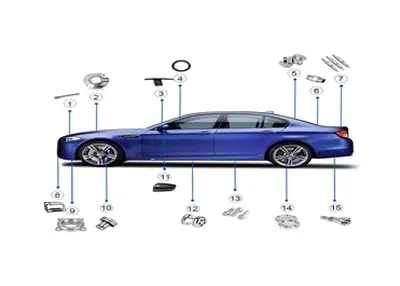 How CNC Automotive Parts Elevate Vehicle FunctionalityJanuary 5, 2024When it comes to the automotive industry, precision and performance are of utmost importance. Manufacturers are constantly striving to enhance the functionality of vehicles, which relies heavily on th...view
How CNC Automotive Parts Elevate Vehicle FunctionalityJanuary 5, 2024When it comes to the automotive industry, precision and performance are of utmost importance. Manufacturers are constantly striving to enhance the functionality of vehicles, which relies heavily on th...view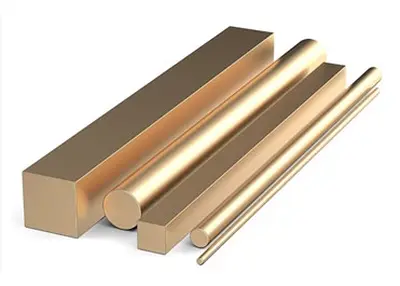 Brass vs Bronze or Brass vs Copper: Which Is Better for Your Project?October 7, 2023This article introduces the difference between brass and bronze and copper, which can help you and your project find the right choice of these metals.view
Brass vs Bronze or Brass vs Copper: Which Is Better for Your Project?October 7, 2023This article introduces the difference between brass and bronze and copper, which can help you and your project find the right choice of these metals.view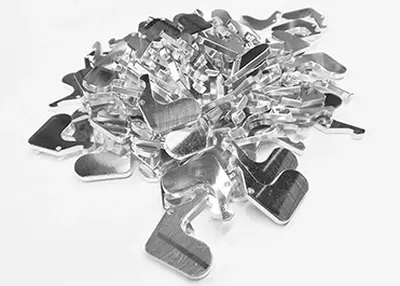 Material Comparison: Difference between High Speed Steel and Tungsten SteelOctober 31, 2023Materials play a vital role in modern industry, and in the field of precision manufacturing, both high-speed steel and tungsten steel are highly regarded materials. They have an important position in the field of tool, mold and mechanical parts manufacturing, etc. However, there are obvious differences between them in terms of characteristics, features, application areas, etc. In this article, we will introduce and compare them. This article will be introduced and compared.view
Material Comparison: Difference between High Speed Steel and Tungsten SteelOctober 31, 2023Materials play a vital role in modern industry, and in the field of precision manufacturing, both high-speed steel and tungsten steel are highly regarded materials. They have an important position in the field of tool, mold and mechanical parts manufacturing, etc. However, there are obvious differences between them in terms of characteristics, features, application areas, etc. In this article, we will introduce and compare them. This article will be introduced and compared.view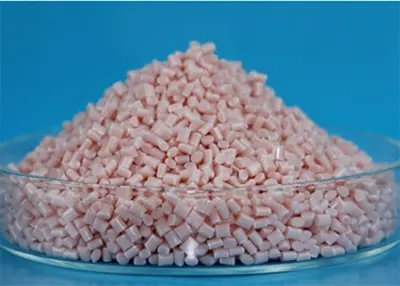 What Is the Threading Method for CNC Machining Centers?April 4, 2023Tapping is a common method in CNC machining technologyIt is generally used in the machining of small-diameter threads, but its precision is relatively poor. Therefore, if high precision is required, t...view
What Is the Threading Method for CNC Machining Centers?April 4, 2023Tapping is a common method in CNC machining technologyIt is generally used in the machining of small-diameter threads, but its precision is relatively poor. Therefore, if high precision is required, t...view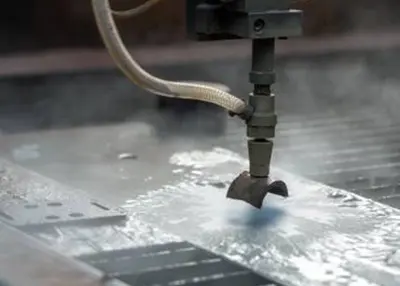 CNC Water Jet Cutter: Precision in Cutting TechnologySeptember 28, 2023Have you ever dreamed of achieving flawless precision in cutting materials, from metal to delicate fabrics, with utmost efficiency and accuracy? Your dream can become a reality with the marvel of technology known as the CNC Water Jet Cutter.view
CNC Water Jet Cutter: Precision in Cutting TechnologySeptember 28, 2023Have you ever dreamed of achieving flawless precision in cutting materials, from metal to delicate fabrics, with utmost efficiency and accuracy? Your dream can become a reality with the marvel of technology known as the CNC Water Jet Cutter.view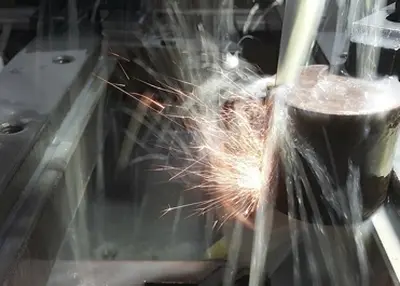 Key Points in Precision Mold Processing TechnologyJuly 21, 2023Precision mold making is a crucial process that requires specialized skills, knowledge, and tools. It involves the creation of tools that are used to produce other parts or products. The quality of th...view
Key Points in Precision Mold Processing TechnologyJuly 21, 2023Precision mold making is a crucial process that requires specialized skills, knowledge, and tools. It involves the creation of tools that are used to produce other parts or products. The quality of th...view